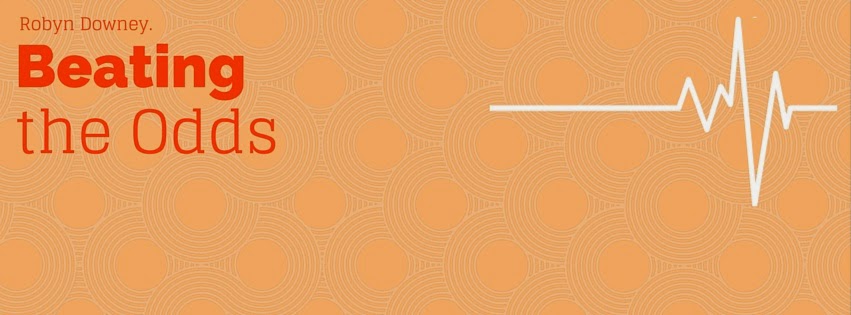Brave
fight back to health
Whangarei Police officer Anton Kuraia set
out on his own journey back to health after almost losing a battle to a very
aggressive form of cancer.
He is now doing a walk to raise awareness
of the more natural methods of dealing with the disease.
But good on him, he has been able to
return to his job from extreme illness, with what he says has been a big change
in his approach to diet and health, generally.
There are other ways of fighting the dreaded
cancer and BTO hopes to profile someone else who has kicked it into touch
totally without orthodox treatments.
BTO is definitely not advocating that
people should ditch their health professionals' advice or recommended
treatments but I think there isn't enough spoken about the possible other
complimentary treatments and options for some people who wish to choose their
method of treatment.
Anton started The 809 Foundation, and you
can read about Anton’s journey through to wellness and his return to work, after
having gone into a good remission from the aggressive acute myeloid leukaemia. The link to the foundation is below where people can donate to help people who may want to look at alternative and complimentary methods of fighting the disease:
So
what is acute myeloid leukaemia?
http://www.leukaemia.org.au/blood-cancers/leukaemias/acute-myeloid-leukaemia-aml
Acute myeloid leukemia (AML) is an aggressive
type of cancer affecting the bone marrow and blood.
Immature white blood cells are
overproduced, which are myoblasts or leukaemic blasts.
The immature cells crowd the bone marrow
preventing normal blood cells to be made. The blasts can also get into the
blood stream, circulating around the body.
These cells are unable to work properly to
fight infections.
Anaemia can then be caused due to too smaller
amount of red cells and platelets being produced by the marrow. Two other
conditions that can be caused by this situation are bleeding and bruising.
How common is it?
Each year in Australia around 900 people
are diagnosed with AML.
Overall AML is rare, accounting for 0.8% of
all cancers diagnosed, at a rate of 3.7 per 100,000 of the population.
Who suffers from it?
AML can occur at any age but is more common
in adults over the age of 60 years. Around 50 children (0-14 years) are
diagnosed with AML in Australia each year. It occurs more frequently in males
than in females.
What’s the cause?
It is largely unknown what causes AML but
is considered to be associated with damage to one or more genes that usually
control blood cell development.
Some people with pre-existing blood
disorders like certain myelodysplastic syndromes (MDS) and myeloproliferative
neoplasms (MPN), or certain genetic disorders like Down's Syndrome, Bloom
Syndrome and Fanconi's anaemia may have a higher than average risk of
developing AML.
Possible symptoms?
The main symptoms of AML are caused by a
lack of normal blood cells. These include:
·
anaemia due to a lack of red cells; causing
persistent tiredness, dizziness, paleness, or shortness of breath when
physically active;
·
frequent or repeated infections and slow
healing, due to a lack of normal white cells, especially neutrophils;
·
increased or unexplained bleeding or
bruising, due to a very low platelet count.
Other symptoms may include bone pain,
swollen lymph nodes, swollen gums, chest pain and abdominal discomfort due to a
swollen spleen or liver.
How to treat it?
A fast moving cancer, means treatment needs
to begin soon after AML is diagnosed.
A number of factors will determine the type
of treatment; including the sub-type of AML, the genetic make-up of the
leukaemic cells, general health and age of the person.
The main treatment is Chemotherapy.
The aim initially, is to destroy leukaemic
cells and induce a remission. This means that there is no evidence of
leukaemic cells in the blood and bone marrow and that normal blood cell
production and normal blood counts are restored. Once a remission has been
achieved, more chemotherapy is given in an effort to prevent the leukaemia from
returning (relapsing).
A combination of drug Chemotherapy is
usually given, usually over a period of a week or so. In most cases the drugs
are given as infusions through a special line called a central venous catheter,
which will be inserted before treatment begins.
People with a sub-type of AML called acute
promyelocytic leukaemia (APML), may also be treated with a non-chemotherapy
drug called all-trans retinoic acid (ATRA), a derivative of vitamin A,
which helps make the leukaemic cells either mature properly, or die.
Occasionally, a stem cell transplant may
be used. This increases the chance of cure for some people with AML.
What are treatment side
effects?
The type and severity of side effects will
vary between individuals, depending on the type of treatment used and how each
individual responds to it. In general, more intensive treatment is associated
with more severe side-effects. It is important that symptoms are reported
immediately to your doctor or nurse, as in most cases they can be treated and
are reversible.
AML affects the ability of the bone marrow
to produce adequate numbers of blood cells and platelets, and chemotherapy
reduces this ability even further. Blood counts generally fall within a week of
treatment and may take some time to recover, depending on the type and doses of
drugs used. During this time, you are likely to need antibiotics and other
drugs to treat, or prevent infection. You are also likely to need blood
transfusions to treat severe anaemia, and platelet transfusions to reduce the
risk of bleeding.



It is perfect time to make some plans for the future and it is time to be happy. I’ve read this post and if I could I desire to suggest you few interesting things or tips. Perhaps you could write next articles referring to this article. I want to read more things about it!
ReplyDeletestar health optima vs comprehensive